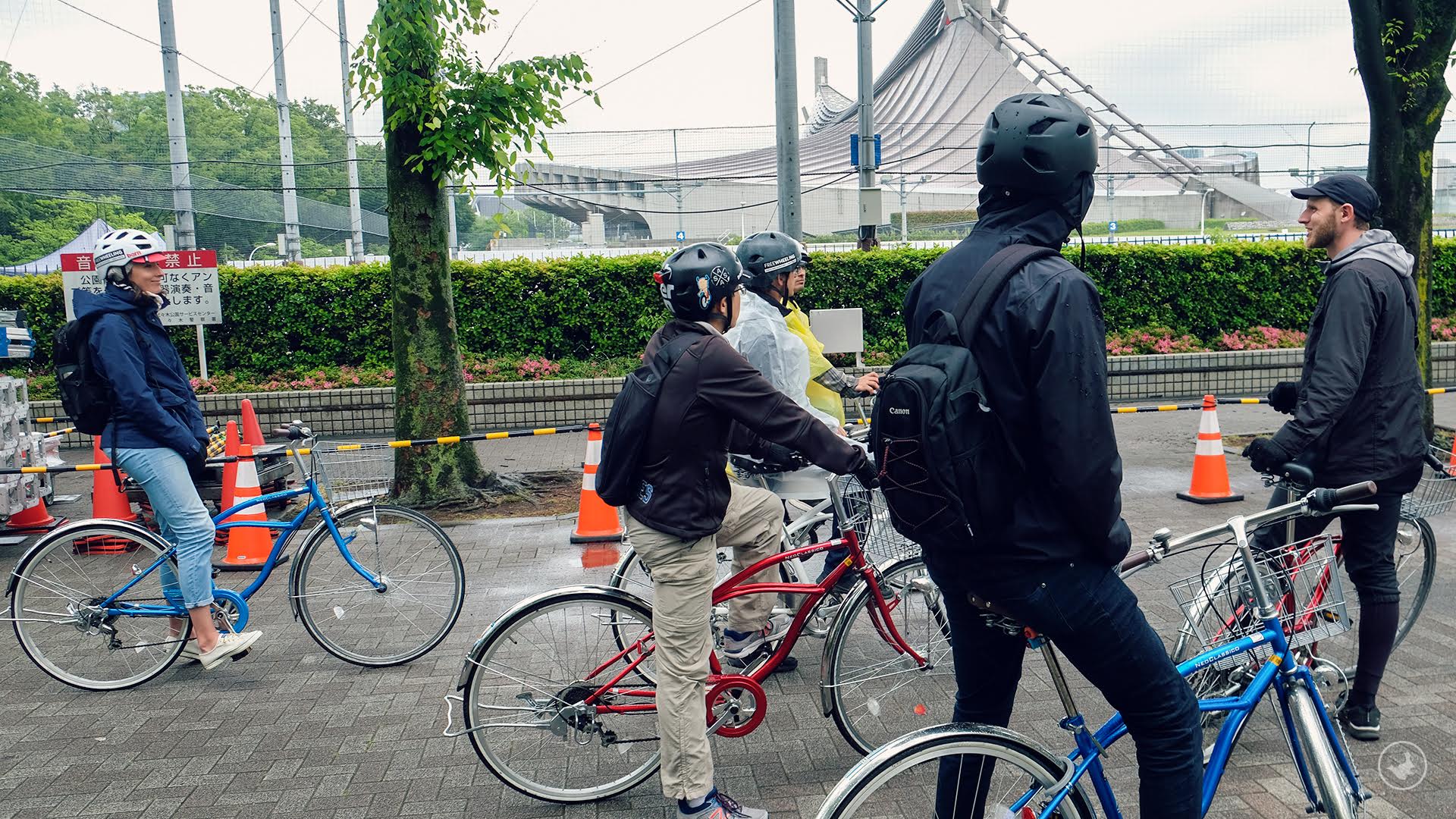Spring is in the air, and we want to remind travelers they can ride with Asia Art Tours, we’re happy to present Japan’s most artistic cycling itinerary!
—->asiaarttours.com/tours/art-on-two-wheel/
It’s a chance to see Tokyo, Kyoto and Onomichi’s art and culture, all on two wheels! Below you can find our chat with our Tokyo Architecture expert (and all around smart guy) Chad. We discuss cycling, how Tokyo’s geography offers multiple perspectives on its architecture and Japan’s unique design sensibilities
AAT: Where are you from and what brought you to Japan?
I was born and raised in west Michigan. While studying at a local art college I met my now wife who happens to be Japanese. Not knowing much about Japan I figured it would be helpful to learn more about her culture, language, and the area she grew up. Shortly after getting married we moved to Tokyo. I’ve been here now for over a decade and it has shaped me into who I am today. I didn’t realize before I moved to Japan how much more I would grow and learn just by stepping out of my comfort zone.
2. What’s the cycling culture of Japan like and how does it differ from your home countries?
Other than cycling to my classes during college I wasn’t really into bicycles in my home country which is probably evidence enough that cycling culture in Tokyo is rather different than in west Michigan. Cycling isn’t looked down on or really even thought of much. It is the most convenient way to get around the city and people just hop on a bike like they are slipping on their shoes. Yes, there are the recreational cyclists in their spandex like the kind I would see back in the States but for the most part people use everyday bikes just to get around town. Cycling isn’t a sub-culture in Tokyo it’s just part of the culture.
3. How did you personally become interested in cycling and do you have any particular philosophy or reasons why you recommend cycling to travelers?
It was after the large earthquake in 2011 when I had to walk 3 hours from the office to my apartment in western Tokyo that I thought that my bike could do a lot more than just get me to the train station and back. I could ride the bike all the way to the office. So I did what I thought was the right thing to do and I got the gloves, the stretchy shorts, the jersey, the tiny hat, the helmet, the water bottle rack, the high-viz vest, and I was ready to go. Then I hit the road and it didn’t take me very long to realize that I was not the only one cycling to work. However, I was the only one with such a ridiculous outfit. The other daily commuters that cycled with me just wore normal clothes and left the helmet to the extreme riders. This was the start of my journey to share the realization that cycling doesn’t have to be a special thing for special people. It’s for everyone. Over the next few years I connected with cycling advocates in Japan and abroad and we created a network of like-minded people who want to make cities more human friendly. We all agree that if you want to learn about a place you should cycle around it. I now know Tokyo’s geography better than many people who have lived here their entire life. I know the neighborhoods and how they connect with their neighbors. I know the most pleasant paths because my curiosity let me explore new routes. I know Tokyo and you can too, just go for a bicycle ride with me.
4. What different viewpoint or experiences do you think people have when cycling in Tokyo & Kyoto that isn’t possible any other way?
When I went to film school many student films showed footage of people driving around at night, the city street light streaming across the windshield. Everything outside was a blur. From this perceptive there’s not much to see. The same goes for how you experience a place. Grab a cab, train or bus and you fly past interesting shops and people. The speed propels you past the very things that make a place a destination. If you come to Tokyo and want to see as much of it as you can but not pass by the little things that make it so interesting you have to do it on two wheels. Walking is great and you will do a lot of walking when in Tokyo but on a bicycle you can go three times as far with one third the effort. It’s great to be able to jump off the bike to get a quick photo or eat at a food stand. The tour bus doesn’t stop if you see an amazing coffee shop that you must try and a cab won’t wait for you to jump out and see the view from to top of a skyscraper. Your viewpoint of the city changes dramatically on a bicycle because you get to see more of the city. The blur on the windshield is actually where all the life is happening.
5. Can you give one example of Japanese art or culture that you personally feel connected to or inspired by?
As a cycling advocate and a graphic designer I am drawn to all the different signs for bicycle related activities that are used in Tokyo. You might not call it art but I would argue that the creativity, uniqueness, and sheer number of different styles, designs, materials and colors could classify it as an art form. It inspires me to keep searching for more diversity in the visual language of bicycle signage.
6. Lastly, what would you say is the number 1 reason a traveler should come to Japan to cycle on this tour?
Shrouded in mystery, Japan is a place many people want to visit to experience a world unlike their own. Some tourists want to see a culture that works differently, has different values, and treats each other differently. But the number 1 reason travelers should come to Japan is because they are curious. Curious to learn about the culture and not point out how different it is, curious to experience things that will challenge their values, and curious to learn how a to behave differently. But a curious traveler already has Japan on their list of places to visit they just need to come and experience it like a local, on a bicycle with us.

To ride with Chad and cycle through Tokyo’s amazing art, architecture and culture, check out the itinerary here: https://asiaarttours.com/tours/art-on-two-wheels
For more information feel free to contact us directly by email, Matt@asiaarttours.com

